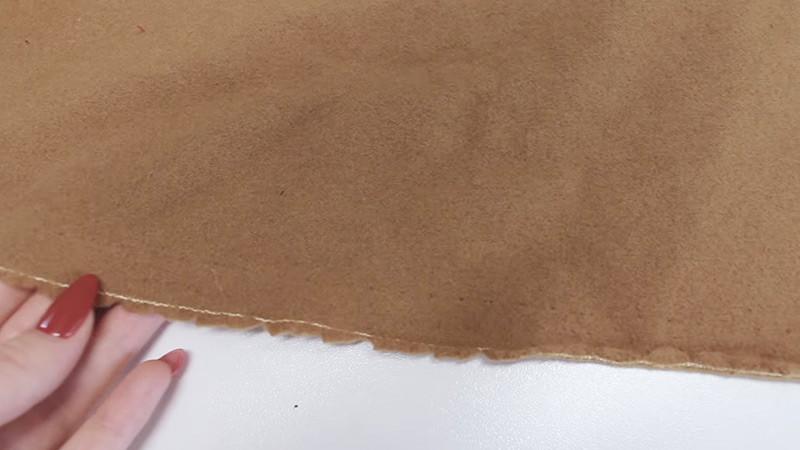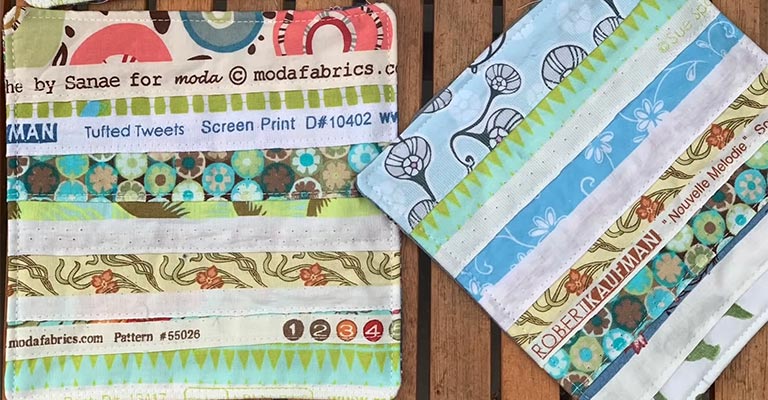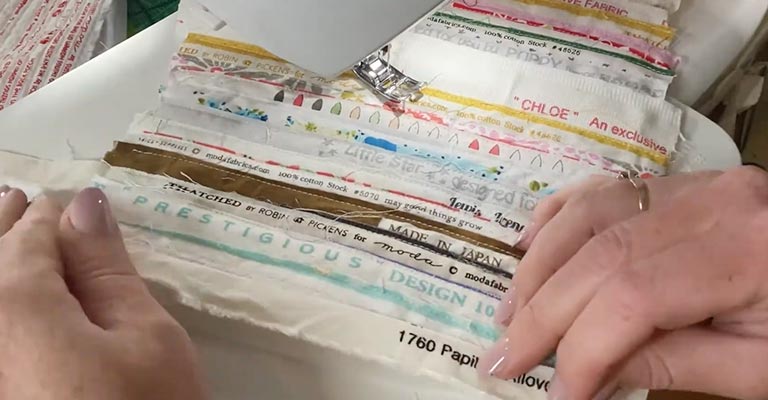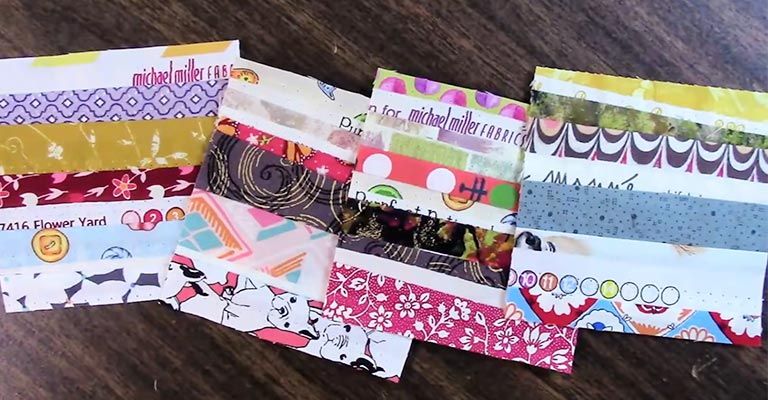Understanding the term “selvage” is essential for anyone embarking on a sewing journey. In the realm of sewing patterns, selvage holds a special significance. It refers to the tightly woven edge of woven fabrics that runs along the length of the material.
This seemingly unassuming border serves several crucial functions in the world of sewing and fabric crafting. From preventing fraying to providing vital fabric information and determining the fabric’s grain direction, selvage plays a pivotal role.
This introduction delves into the multifaceted importance of selvage in sewing patterns, shedding light on its diverse roles and guiding both beginners and experienced sewers on its practical applications.

What Does Selvage Mean In Sewing Patterns?
In sewing patterns, “selvage” refers to the tightly woven edge of woven fabrics, running along the length. Its primary purpose is to prevent fraying and unraveling.
Selvage often carries information about the fabric, such as the manufacturer, designer, and color details, aiding in fabric identification. Additionally, it serves as a reference for the fabric’s grain direction, including lengthwise, crosswise, and bias grains.
While sewing patterns typically exclude the selvage in the final project due to its different texture and appearance, some creative applications, such as decorative trims, can utilize it.
Understanding the role of selvage is crucial for accurate cutting and sewing in the world of fabric crafting.
What Is the Significance of Selvage in Sewing Patterns?

The selvage, a tightly woven edge that runs along the length of woven fabrics, holds significant importance in the realm of sewing patterns. It serves several crucial roles that impact the outcome and execution of sewing projects:
Preventing Fraying
The primary function of selvage is to act as a protective edge that prevents the fabric from fraying or unraveling. Its tightly woven structure ensures that the fabric’s edges remain intact during the cutting and sewing process.
Fabric Identification
Selvage often contains critical information about the fabric itself. This information can include details such as the manufacturer’s name, the designer’s name, the name of the fabric design or pattern, and color swatches.
This serves as a valuable signature or label of the fabric, making it easier to identify and source more of the same fabric for future projects.
Grain Determination
Understanding the grain of the fabric is pivotal for precise cutting and sewing. The grain refers to the direction of the threads that make up the fabric, including the lengthwise grain (parallel to the selvage), crosswise grain (perpendicular to the selvage), and bias grain (at a 45-degree angle to the selvage).
Identifying these grain lines is critical for ensuring that pattern pieces are cut and sewn in a way that maintains the fabric’s intended drape and behavior.
Fabric Handling
Selvage also provides a guide for how to handle the fabric correctly. When you follow the direction of the grain, you minimize the risk of fabric distortion, stretching, or misalignment in your sewing project.
Matching Fabrics
For projects that require multiple fabrics to coordinate or match, the information on the selvage can be invaluable. It allows you to identify and select the right fabrics with confidence.
Resourceful Use
While selvage is typically not incorporated into sewing projects, it can have creative applications in decorative trims, accents, or unique design elements, adding a personalized and distinctive touch to the finished piece.
What Are the Different Types of Selvage Edges in Fabrics?

Selvage edges in fabrics can come in various types, each with its own characteristics and appearance. Here are some of the different types of selvage edges you might encounter:
Plain Selvage
A plain selvage is the most basic type. It typically consists of a simple, tightly woven edge with no additional decoration or markings. Plain selvage is often found on solid-colored fabrics and serves the primary purpose of preventing fraying.
Printed Selvage
Some fabrics have printed selvage edges. These selvages may feature decorative designs, patterns, or branding information printed directly onto the edge. The printed information can include the fabric manufacturer’s name, designer logos, or the fabric’s name and pattern.
Decorative Selvage
Decorative selvage edges are designed to be visually appealing and are sometimes created to add an extra touch of elegance to the fabric. They can feature intricate weaves, embossed patterns, or other decorative elements that make the selvage stand out.
Informational Selvage
Informational selvage includes details about the fabric. This may include the fiber content (e.g., “100% cotton”), care instructions (e.g., washing and ironing guidelines), and sometimes even a repeat of the fabric’s pattern.
Colored Selvage
In some cases, the selvage is dyed or colored differently from the main fabric. This colored selvage can serve both functional and decorative purposes. It can help you quickly identify the edge of the fabric and may add a pop of color to the fabric’s design.
Striped Selvage
Striped selvage edges feature stripes or lines running along the edge, creating a distinct pattern. These stripes may be simple or elaborate and can vary in color and width.
Dotted Selvage
Dotted selvage edges consist of small dots or circular patterns along the edge. These dots can be evenly spaced or form specific designs, contributing to the overall look of the fabric.
Salvage with Designer Logos
Some high-end or designer fabrics feature selvage edges with their logos or branding prominently displayed. This adds a touch of luxury to the fabric and can be a mark of authenticity.
How Can Selvage Be Creatively Used in Sewing Patterns?

Selvage, with its unique texture and often distinct appearance, can be creatively incorporated into sewing patterns to add a personalized and unique touch to your projects.
Here are innovative ways to use selvage creatively in your sewing patterns:
Decorative Trims
Use selvage as a decorative trim along the edges of clothing, bags, or home decor items. The selvage’s unique texture can add a stylish border to your projects, enhancing their overall aesthetic.
Piping and Binding
Cut the selvage into strips and create piping or binding for seams, edges, or hems. This adds structured detailing to your sewing patterns, making them visually appealing and reinforced.
Patchwork and Quilting
Incorporate selvage strips into patchwork or quilt patterns. The selvage can serve as a standout element amid other fabric pieces, introducing visual interest and creativity.
Appliqué
Craft appliqué shapes or designs using selvage and stitch them onto your sewing projects. This is a creative way to incorporate the distinct appearance of selvage into various items, from garments to home decor.
Handles and Straps
Create sturdy handles or straps for bags, totes, or backpacks using selvage. Its stiffness provides durability and structure, ensuring these elements withstand everyday use.
Labeling
Use a piece of selvage to create a label for your sewing projects. These labels can include essential information about the project, the fabric used, or your personal branding, adding a professional and personalized touch.
Textured Cuffs and Collars
Incorporate selvage strips as cuffs, collars, or pocket details on clothing items. This inventive use of selvage adds a unique and eye-catching element to your garments, making them stand out.
Bookmarks
Craft bookmarks with selvage strips for a creative and personalized gift idea, particularly appealing to book lovers and avid readers.
Fabric Jewelry
Transform selvage into jewelry pieces like earrings, bracelets, or pendants. The distinctive texture and patterns can give rise to one-of-a-kind accessories that are both fashionable and meaningful.
Home Decor Accents
Infuse selvage into home decor projects like table runners, placemats, or curtains. The selvage can introduce originality and uniqueness to your interior design, allowing you to personalize your living space.
Gift Wrapping
Use selvage to wrap small gifts, replacing conventional wrapping paper. This eco-friendly approach not only imparts charm to your presents but also reduces waste, making it an eco-conscious choice.
FAQs
Is selvage typically used in sewing projects, or is it better to trim it away?
Selvage is usually trimmed away in most sewing projects because it can have a different texture or appearance from the main fabric, affecting the overall look of the project. However, it can be creatively incorporated in certain cases.
What is the role of the fabric grain in sewing patterns, and how does selvage help determine it?
The fabric grain, determined with the help of the selvage, is essential for cutting pattern pieces accurately to ensure the fabric drapes and behaves as intended in the final project.
Are there specific sewing patterns that incorporate selvage for creative effects?
Some sewing patterns are designed to incorporate selvage intentionally for specific creative effects, such as using it as a decorative element or trim.
Can selvage edges vary in width, and if so, how does this impact sewing patterns?
Yes, selvage widths can vary between fabrics and manufacturers. It’s important to consider the selvage’s width when planning pattern placement and seam allowances.
Are there specific techniques for joining selvage edges when creating a seamless look in sewing patterns?
Yes, techniques like “French seaming” can be used to join selvage edges in a way that creates a seamless look on the inside of the fabric, providing a polished finish.
To Recap
The term “selvage” in sewing patterns represents far more than just the edge of a fabric. It is a key component that ensures the success and quality of your sewing projects.
Selvage, with its unique texture and information, prevents fraying, assists in fabric identification, and helps you understand the fabric’s grain direction. Whether you’re a novice or an experienced sewer, recognizing the significance of selvage is essential.
It guides you in proper fabric handling, coordinates fabric choices, and, in some cases, allows for creative and artistic touches. By embracing the potential of selvage, you enhance the art and craft of sewing, resulting in more polished and professional creations.
Leave a Reply